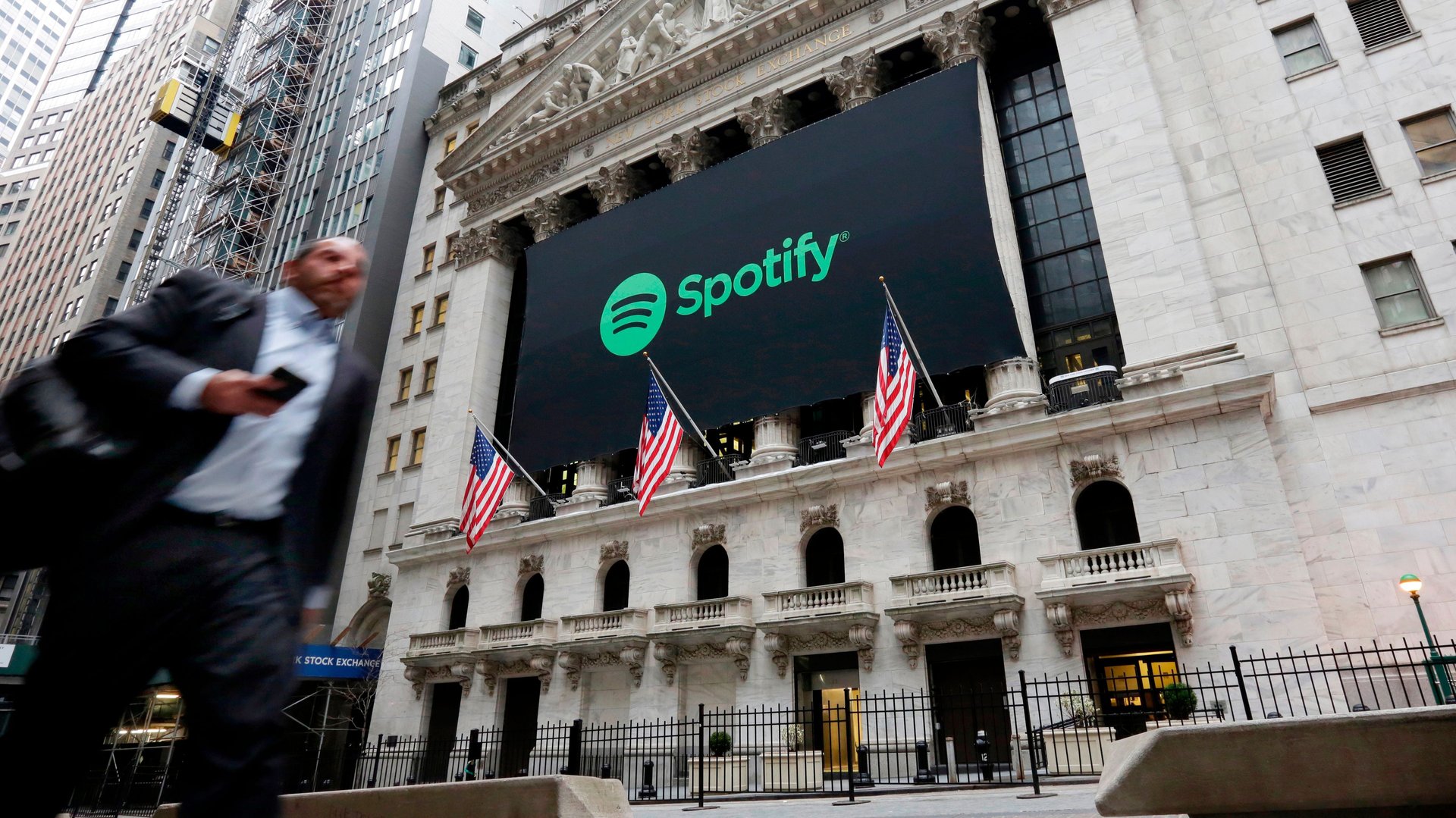Spotify plans to get ahead of Amazon, Google, and Apple on their own turf
Spotify’s focus on growth rather than margins was largely to blame for its share prices falling after the streaming service reported its first-ever quarterly profit this week. And even if investors remain somewhat skeptical, the company says it has a winning strategy for the long term.


Spotify’s focus on growth rather than margins was largely to blame for its share prices falling after the streaming service reported its first-ever quarterly profit this week. And even if investors remain somewhat skeptical, the company says it has a winning strategy for the long term.
While Spotify might have withheld some of its future strategy in its Nov. 1 earnings report and call, what they have revealed is telling enough: By continuing to invest in the user experience at the expense of profits (for now), Spotify hopes its product will be better than the music streaming services of Amazon, Google, and Apple—and on those companies’ own platforms too.
“We’ve given you an incomplete picture of the future, and not yet commented on 2019 and any benefits that might result from the investments we’re making,” Barry McCarthy, Spotify’s chief financial officer, said on the Nov. 1 earnings call.
Partners give reach
McCarthy said that Spotify was investing in growth through marketing, geographic expansion (much of Spotify’s strong Q3 was fueled by emerging markets like Latin America), and “investment in features and functionality that drive a better user experience.” One key component is exploring distribution partnerships.
Last year, Spotify was integrated onto the Google-owned navigation app Waze, and earlier this year, Samsung entered into a long-term agreement with Spotify to support it on all its devices. As other tech giants continue to compete over the smart home industry, Spotify says it will stick to its music business, invest enough to get it right—and capitalize on the growing audiences using all those tech giants’ products.
“One of our key strategies is to partner with as many players as we possibly can,” Daniel Ek, Spotify’s chief executive officer, said on the earnings call. “And by being an independent player in all of this, that opens up for that strategy where we can be on every device, which we know that our customers really enjoy. Because the truth of the matter today is that there’s a lot of customers out there that have devices of many of these ecosystems, whether it be Amazon, Google, or Apple ecosystems, and Spotify’s goal is to be a top-notch user experience on all of those devices.”
This week, Spotify announced that it’s giving way a free Google Home Mini to subscribers in the US that have a “Premium for Family” plan. This could help Spotify get ahead of Amazon Music—Amazon’s streaming service has been experiencing rapid growth, largely by leveraging its Echo products, so this partnership is a clever way to increase the number of listeners who use Spotify on smart speakers. Ek said the company would build on its partnership with Google in the coming months, suggesting that Spotify might get further exposure through Google’s ecosystem. (In light of Spotify’s 87 million paid subscribers, Google Play Music and its partner, YouTube Music, aren’t likely to get ahead soon anyway.)
Playing on all platforms
Internally, Spotify said it would continue to build up other forms of audio entertainment, like podcasts, and its Spotify for Artist platform, which lets independent artists upload music directly. In its Q3 letter to shareholders, Spotify said it would “accelerate the pace of investment in R&D and content in 2019.” But investors continue to be unsure about Spotify’s ambitious plans to get ahead—Barclays’ report on Spotify’s Q3 performance said that “competition from well-resourced peers” (like Apple Music or Amazon Music) continues to be a downside. But Spotify’s strategy seems firm.
“[Spotify is] an engineering-driven org, very product focused…and the point is to accelerate the growth of the business as a concept lens,” McCarthy said.
Spotify might not have the resources of massive companies like Apple and Amazon to create a smart home system on its own, or depend on industries other than music. Still, considering that nearly 50% of US homes will have smart speakers by the end of the year, Spotify can try to create product users like so much that they become the first choice, on any system.